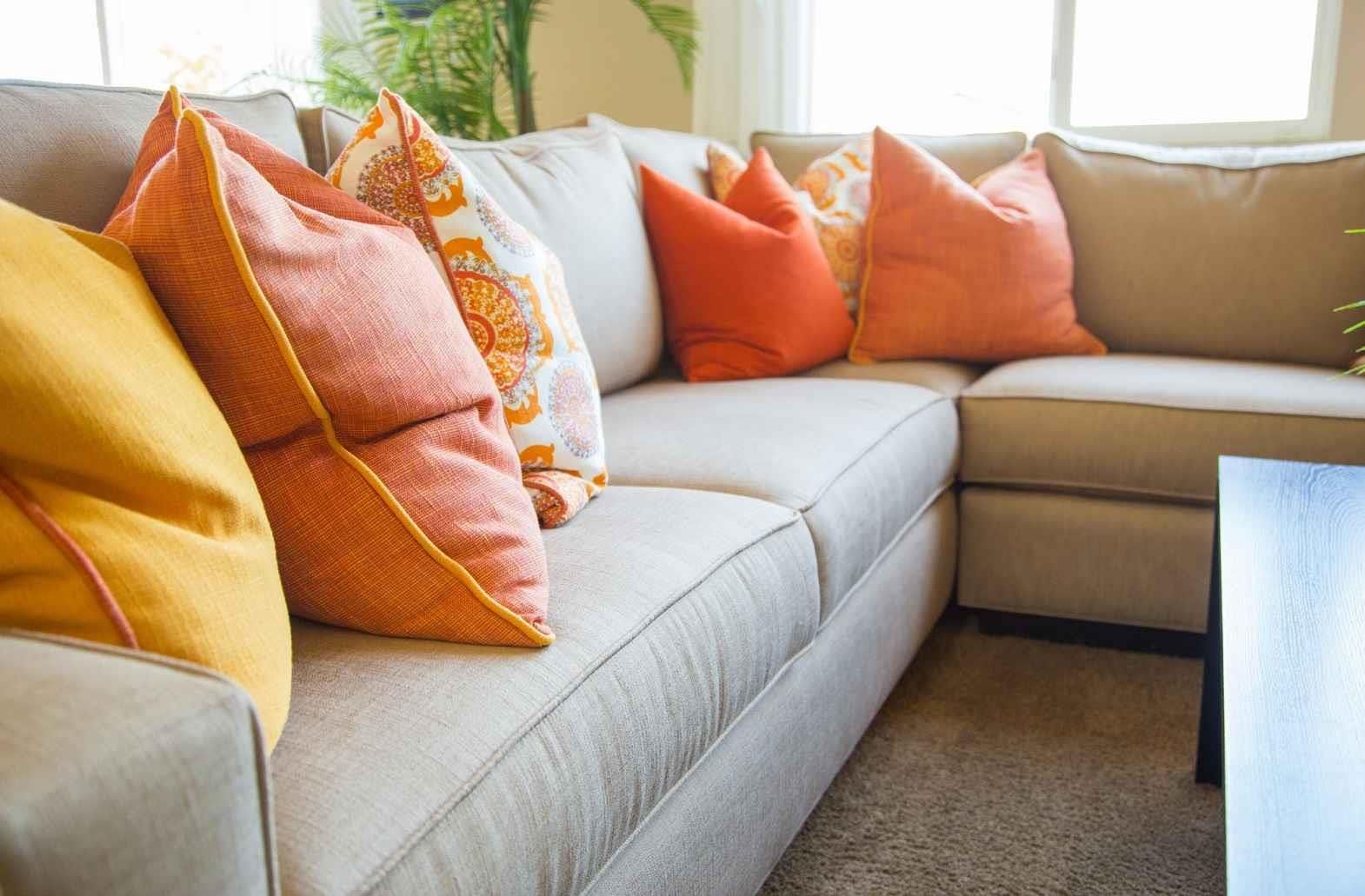In contemporary homes worldwide, home textiles have evolved beyond mere necessities. The home textiles industry has seen substantial growth in recent years, marked by diversification and innovation. While their primary functions remain practical and decorative, home textiles also enhance relaxation, fostering a serene and joyful environment. Consequently, they not only beautify a space but also contribute to its comfort.
The style, colour, and variety of home textiles captivate everyone. They transform the ideal of a dream home into a heavenly sanctuary within one’s own house. Recent market introductions include contemporary home textile solutions that excel in functionality, user-friendliness, and affordability. A combination of specific textiles, accents, and furnishings turns a house into a home, with the fabric’s inherent qualities providing a sense of ease. The right home textile, available in various hues, characteristics, patterns, and textures, can rejuvenate a space’s coziness.
In recent years, the textile industry has invested heavily in new infrastructure and technology, leading to significant modernisation. These advancements, blending cutting-edge technologies with traditional methods, have the potential to significantly steer the growth trajectory of the home textile sector.
Innovations in Home Textile Technology
Here are some of the latest innovations in home textile technology:
Solar Curtains: Nowadays, many people opt for digitally controlled curtains, with solar curtains being particularly popular. The market is abundant with innovative curtain designs, including magnetic, automated, and solar-powered options. Solar curtains are especially suitable for those looking to block out the sun’s heat from their spaces. Typically, available as foldable roman shades, they are easy to install and can help reduce electricity costs. Solar curtains keep the space cool in summer without obstructing the outdoor view. They are powered by solar energy, with solar panels often placed on the roof to convert heat into electricity, which can then power a room’s air conditioning.
Solar Panel Blinds: Representing a significant technological advancement, solar panel blinds, or solar blinds, enhance our potential for a greener society by converting solar energy into electricity. These blinds are essentially window sunscreen blinds made from solar panels. Similar to regular roller shades, solar blinds use specially designed fabric to block out UV rays, heat, and sun glare. The degree of heat and UV protection, as well as transparency, varies depending on the fabric type and colour. These elements collectively contribute to the practicality and accessibility of solar sunshades.
Cloud Sofa: Imagine unwinding on a luxurious and comfortable sofa after a busy day. That is the essence of cloud sofas, offering an opulent and comfortable experience. These sofas are characterised by their plush upholstery, generously filled cushions, and deep seats, beckoning you to sink in and relax. Perfect for creating a living room that doubles as a lounge, cloud sofas inspire relaxation and provide an inviting space for both entertaining and resting.
Cloud sofas are made from a variety of materials including cotton, leather, linen, and wool. Some feature removable covers for the seat and back cushions, adding convenience and versatility. For additional comfort, certain cloud sofas incorporate high-density foam, offering firm lumbar support alongside pleasant seating. Whether curved, featuring angled arms, draped in a striking colour, or a combination of these elements, these sofas blend comfort with style, making them a focal point in any living space.
Increase in Demand for Sustainable Fibre
The demand for sustainable fibre is on the rise, largely because these fibres are often produced and processed with fewer chemicals and pesticides, thereby reducing the environmental impact of textiles and apparel. Moreover, sustainable fibres typically require less energy and water in their production, making them an appealing option for individuals aiming to lead more eco-friendly lifestyles.
For example, RESTech COTTON1 offers a notably soft touch, being up to 40 per cent softer than untreated cotton sheets, which enhances the luxury of bedtime experiences. It is naturally hypoallergenic, making it suitable for people with sensitive skin. Additionally, RESTech COTTON technology uses natural fibres, meaning it does not contribute to microplastic pollution through the use of plastic or petroleum-derived fibres. This technology aligns well with the growing consumer interest in wellness and sustainability.
Bold and Bright Prints
In 2024 and beyond, bold prints and patterns are set to be a popular trend. Geometric shapes and abstract motifs are both in vogue. These designs are an excellent way to make a statement in anyone’s home, adding joy and playfulness to any space. Vivid colours are going to be significant in 2024 too, with shades ranging from bright greens to bold pinks. These hues offer a fantastic way to enliven any room in your home, adding a burst of vibrancy and energy.
Bedsheets Made with the Aid of Nanotechnology
High-quality bedsheets can significantly impact people’s sleep quality. Modern home textiles have enabled the creation of bedsheets that remain cool throughout the summer, thanks to the incorporation of nanotechnology. This technology enhances various features of the bedsheets, including moisture resistance, breathability, and odour resistance. Their advanced moisture-absorbing technology helps regulate body temperature during sleep, promoting a more comfortable rest.
Another notable application of nanotechnology in bedding is the development of self-cleaning bed linens. As the name suggests, these bedsheets are designed to repel water and dirt, preventing them from lingering on the surface for long periods. These fabrics are also known as nano-care textiles. They work by eliminating any points of interaction with external substances such as dirt, dust, and other particles, maintaining cleanliness and hygiene over extended use.
Comeback of Velvet
In the coming years, velvet, a luxurious material, is set to make a significant comeback. Known for its pleasant texture, durability, and resilience, velvet is becoming a popular choice for furniture upholstery. This material not only adds elegance to throw pillows and drapes but is also ideal for imparting a touch of glamour to your home.
Velvet’s unique aesthetic appeal makes it a favoured choice for drapes, throw pillows, and other home decor items. Looking ahead, polyester velvet is expected to become particularly popular for upholstery due to its robustness and longevity, combining luxury with practicality.
Gel Mattress
Gel mattresses, which incorporate a special kind of gel, are gaining popularity due to their enhanced cooling properties. This gel, infused into memory foam, offers up to seven times more cooling compared to a typical mattress. Featuring state-of-the-art technology, these mattresses provide exceptional body support with cooling materials and a dual coil support system, making them a superior choice over traditional mattresses in terms of comfort.
For those who experience hot flashes or night sweats, a gel foam mattress is a worthwhile consideration. While open-cell memory foam improves air circulation by maintaining air pockets, the gel in these mattresses offers a more effective cooling solution, retaining the benefits of traditional memory foam.
The mattress market offers various types, including air mattresses, silicone mattresses, and water beds, each with unique features. For instance, water beds can assist with regulating blood pressure, alleviating back pain, and supporting the spine correctly. Air mattresses offer adjustable firmness based on the amount of air pumped in, providing customisation options not typically available with other types of beds.
Usage of Natural Textiles
In the coming years, natural textures such as sisal fibres, organic cotton, Pima cotton, and bamboo are set to be prominent, featuring in items ranging from woven baskets to bulky knit wraps. These textiles are ideal for creating a serene ambiance, adding a touch of coziness and warmth to any space.
Sisal fibres, known for their durability, longevity, and versatility, are perfect for carpets and rugs. Heavier materials like lawn, muslin, and Pima cotton are well-suited for tablecloths, curtains, and drapes. Bamboo, seagrass, and sisal can be used to make rugs, baskets, and placemats.
This season, a notable trend is the combination of natural textiles with metallic threadwork and cording, providing a shimmering new look to landscapes inspired by forests or underwater scenes. Additionally, abstract patterns have gained popularity in showrooms, appealing to those with a taste for modern aesthetics. Natural fibre textiles facilitate air circulation through their ‘wicking’ action, which absorbs and releases perspiration into the air, unlike synthetic fibres, which, due to their denser molecular structure, cannot ‘breathe’ in the same way.
Ending Note
Many regard textile design as a traditional discipline bound by rigid rules and established trends. However, there is an emerging trend in textile design that embraces unconventionality and fosters creativity. By deviating from conventional patterns and structures, designers are crafting original and innovative designs that challenge the norms. These designs often push the boundaries of what is possible with textiles, introducing new methods and materials to the industry.
Home textiles play a crucial role in making various tasks visually appealing and convenient. Recent advancements in nanotechnology have facilitated the creation of these accessories, leading to automated home decor pieces. Creative textile accessories have the power to transform an ordinary house into a sanctuary. Achieving this transformation is only possible with the help of sophisticated, functional furniture and home decor items.









Comments